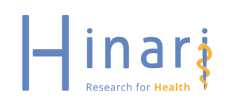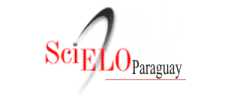Reacciones adversas más frecuentes de los fármacos antirretrovirales
Resumen
Introducción: las reacciones adversas a los antirretrovirales constituyen un obstáculo para el cumplimiento y la buena adherencia, debido a la gravedad que pueden alcanzar estos efectos, al abandono del tratamiento y/o remplazo del fármaco en cuestión.
Objetivos: describir las reacciones a antirretrovirales más frecuentemente observadas.
Pacientes y métodos: diseño observacional retrospectivo realizado en varones y mujeres, mayores de edad, portadores de HIV, que consultaron en el Servicio de Atención Integral del Hospital Nacional entre noviembre de 2007 y diciembre 2012.
Resultados: fueron incluidos 190 pacientes, en 59 casos (31%) se presentaron efectos secundarios al TARGA. La edad media fue 35 años (rango 19-63 años). El 62,2% de los sujetos correspondían al sexo masculino. Predominaron las manifestaciones neuropsicológicas (28%), dermatológicas (22%) y hematológicas (21%).
Citas
Astuvilca J, Arce-Villavicencio Y, Sotelo R, Quispe J, Guillén R, Peralta L, Huaringa J, Gutiérrez C. Incidencia y factores asociados con las reacciones adversas del tratamiento antirretroviral inicial en pacientes con VIH. Rev Peru Med Exp Salud Pública 2007; 24(3): 218-24.
Grupo de Estudio de Sida (GeSIDA). Documento de consenso del Grupo de Estudio de Sida/Plan Nacional sobre el Sida respecto al tratamiento antirretroviral en adultos infectados por el virus de la inmunodeficiencia humana (actualización enero 2010). Enferm Infecc Microbiol Clin. 2010; 28(6): 362.e1-e91.
Programa Nacional de Control de SIDA/ITS. Normas nacionales de tratamiento antirretroviral en adultos y adolescentes. /Internet/. 5ª ed. Asunción: PRONASIDA; 2011. /citado 20 marzo 2014/. Disponible en: http://www.cird.org.py/sida/documentos/NORMAS_TARV_2011.pdf
Clarke TR, Barrow G, Thompson D, Gibson R, Barton EN. Response to first line HAART using CD4 cell counts experience in a university hospital in Kingston. West Indian Med J. 2010 Jul; 59(4): 439-44.
Saldaña Gastulo JC, Purizaca Rosillo C, Carreño Ramírez J, Malqui Huaman C, La Chira Albán A, Gutiérrez Aguado A. Reacciones adversas al tratamiento antirretroviral de gran actividad en el Hospital Santa Rosa Piura. CIMEL. 2009; 14(1): 21-6.
Santos Corraliza E, Fuertes Martín A. Efectos adversos de los fármacos antirretrovirales. Fisiopatología, manifestaciones clínicas y tratamiento. An Med Interna (Madrid). 2006; 23(7): 338-44
Santos Corraliza E, Fuertes Martín A. Antiretroviral therapy and mitochondrial toxicity. Med Clin (Barc). 2007 Mar 3; 128(8): 311-6.
Larrea Fabra R, Roque Acosta MC. Vigilancia farmacológica con el uso de los antirretrovirales. Rev Cubana Med. 2007; 46(4).
Gutiérrez Rodríguez R, Soto Arquiñigo L. Efectos adversos de la terapia antirretroviral. /Internet/. Peru : Instituto de Medicina Tropical Alexander Von Humboldt. /citado 19 marzo 2014/. Disponible en: http://www.upch.edu.pe/tropicales/telemedicinatarga/REVISION%20DE%20TEMAS/efectos%20adversos%20version%20final.pdf
Sociedad Argentina de Infectología. Recomendaciones para el seguimiento y tratamiento de la infección por HIV/SIDA y sus comorbilidades asociadas. /Internet/. SADI; 2012. /citado 18 marzo 2014/. Disponible en: http://aidstar-one.com/sites/default/files/Argentina_2012_tagged.pdf
Grinspoon S, Carr A. Cardiovascular risk and body-fat abnormalities in HIV-infected adults. N Engl J Med. 2005 Jan 6; 352(1): 48-62.
Castro Sansores CJ, Santos Rivero A, Salazar Rendón JC, Díaz Rodríguez I, Góngora Biachi RA, González Martínez PM. Síndrome de lipodistrofia en pacientes con infección por VIH que reciben tratamiento antirretroviral. Med Int Mex. 2008; 24(1):8-15.
Calvo M, Martinez E. Update on metabolic issues in HIV patients. Curr Opin HIV AIDS. 2014; 9(4):332-9
Rodríguez-Carranza SI, Aguilar-Salinas CA. Anormalidades metabólicas en pacientes con infección por VIH. Rev Invest Clin. 2004 Mar-Apr; 56(2): 193-208.
Lana R, Núñez M, Mendoza JL, Soriano V. Rate and risk factors of liver toxicity in patients receiving antiretroviral therapy. Med Clin (Barc). 2001 Nov 17;117(16):607-10.
Gayle F, Lee MG, Hanchard B, Mills M. Steatohepatitis due to antiretroviral therapy. West Indian Med J. 2008 Jan; 57(1): 66-9.
Manfredi R, Calza L. HIV infection and the pancreas: risk factors and potential management guidelines. Int J STD AIDS. 2008 Feb; 19(2): 99-105.
Oliveira NM, Ferreira FA, Yonamine RY, Chehter EZ. Antiretroviral drugs and acute pancreatitis in HIV/AIDS patients: is there any association? A literature review. Einstein (Sao Paulo). 2014 Jan-Mar; 12(1): 112-9.
Sánchez Hellín V, Gutiérrez Rodero F. Toxicogenetics of antiretroviral treatment (II): neurotoxicity, hepatotoxicity, lactic acidosis, kidney damage, and other adverse effects of antiretroviral drugs. Enferm Infecc Microbiol Clin. 2008 May; 26 Suppl 6: 24-33.
Decloedt EH, Maartens G. Neuronal toxicity of efavirenz: a systematic review. Expert Opin Drug Saf. 2013 Nov; 12(6): 841-6.
Liner KJ 2nd, Ro MJ, Robertson KR. HIV, antiretroviral therapies, and the brain. Curr HIV/AIDS Rep. 2010 May; 7(2): 85-91.
Cespedes MS, Aberg JA. Neuropsychiatric complications of antiretroviral therapy. Drug Saf. 2006; 29(10): 865-74.
Raines C, Radcliffe O, Treisman GJ. Neurologic and psychiatric complications of antiretroviral agents. J Assoc Nurses AIDS Care. 2005 Sep-Oct; 16(5): 35-48.
Erlandson KM, OʼRiordan M, Labbato D, McComsey GA. Relationships between inflammation, immune activation, and bone health among HIV-infected adults on stable antiretroviral therapy. J Acquir Immune Defic Syndr. 2014 Mar 1; 65(3): 290-8.
Choe PG, Choi HJ, Kim NH, Park WB, Song KH, Bang JH, et al. High prevalence of low bone mass and associated factors in Korean HIV-positive male patients undergoing antiretroviral therapy. J Int AIDS Soc. 2014 Jan 9; 17: 18773.
Del Carpio-Cano FE, DeLa Cadena RA, Sawaya BE. HIV and Bone Disease: A perspective of the role of microRNAs in bone biology upon HIV Infection. J Osteoporos. 2013; 2013: 1-8
Mijiti P, Yuexin Z, Min L, Wubuli M, Kejun P, Upur H. Prevalence and predictors of anemia in patients with HIV infection at the initiation of combined antiretroviral therapy in Xinjiang, China. Int J STD AIDS. 2014 May 8.
Redig AJ, Berliner N. Pathogenesis and clinical implications of HIV-related anemia in 2013. Hematology Am Soc Hematol Educ Program. 2013; 2013: 377-81
Gedefaw L, Yemane T, Sahlemariam Z, Yilma D. Anemia and risk factors in HAART naïve and HAART experienced HIV positive persons in south west Ethiopia: a comparative study. PLoS One. 2013 Aug 16;8(8):e72202.
Cabanelas N, Ferreira P, Roxo F. Cardiovascular complications of highly active antiretroviral therapy: case report. Rev Port Cardiol. 2009 Jun; 28(6): 749-58.
Neumann T, Kondratieva J, Eggebrecht H, Wieneke H, Esser S, Bartel T, Erbel R. Coronary heart disease associated with the use of highly active antiretroviral therapy (HAART). A case report and review. Herz. 2005 Sep; 30(6):504-9.
Pérez-Camacho I, Camacho A, Torre-Cisneros J, Rivero A. Cardiovascular risk factors associated with antiretroviral therapy. Enferm Infecc Microbiol Clin. 2009 Sep;27 Suppl 1:24-32.
Blanes M, Belinchón I, Portilla J. Cutaneous drug reactions in HIV-infected patients in the HAART era. Actas Dermosifiliogr. 2009 May; 100(4): 253-65.
Lehloenya RJ, Kgokolo M. Clinical presentations of severe cutaneous drug reactions in HIV-infected Africans. Dermatol Clin. 2014 Apr; 32(2): 227-35.
Domingo P, Lozano F. Manejo de la toxicidad por fármacos antirretrovirales. Enferm Infecc Microbiol Clin. 2011; 29(7): 535-44.
Ribera E, Tuset M, Martín M, del Cacho E. Characteristics of antiretroviral drugs. Enferm Infecc Microbiol Clin. 2011 May; 29(5): 362-91.
Escudero Vilaplana V, Plata Paniagua S, Rodríguez González C, Castillo Romera I, Ais Larisgoitia A, Sanjurjo Sáez M. Permanencia del tratamiento antirretroviral de última generación en la práctica clínica diaria. Farm Hosp. 2013 Mar-Apr; 37(2): 151-5.
Bottaro EG. Enfuvirtide: the first step for a new strategy of antiretroviral therapy. Medicina (B Aires). 2007; 67(2): 195-205.
Blamey R. Experiencia y manejo de las toxicidades en esquemas con inhibidores de transcriptasa reversa análogos de nucleósidos alternativos. Rev Chil Infectol. 2004; 21(4): 299-306

















